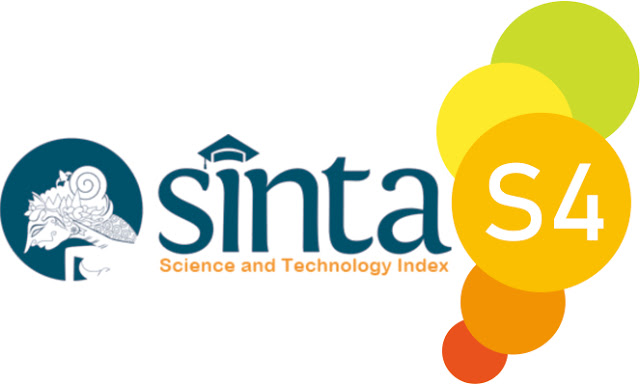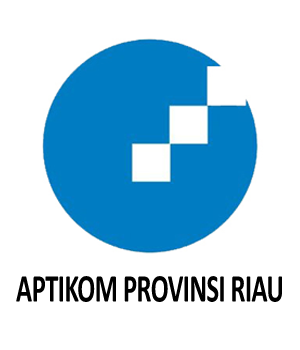Analysis Of Employee Discipline Based On Digital Attendance With The K-Means Algorithm Method
Abstract
Employee discipline is one of the most important factors for the progress of the company. PT. Sumatra Core Cellular (PT. SIS) Pekanbaru has implemented a digital attendance application, but the company has not evaluated the application to determine the level of employee discipline. Data mining is the process of extracting useful information from a large database population. One of the data mining methods is the K-Means algorithm. The data mining process uses the method of K-Means algorithm with 2 clusters namely discipline and less disciplined categories. The data used is attendance data of 159 employees, namely data on tardiness, non-attendance (TAP), attendance hours and 4 selected questionnaire questions. Tools for grouping with the Rapidminer application. Using the K-Means algorithm method, it is known that cluster 0 consists of 133 employees or 83.64% with a disciplined category and cluster 1 produces 26 employees or 16.35% with a less disciplined category. Judging from the accuracy of attendance hours, employees in cluster 0 are more likely to be present at 07.45 - 08.15 and in cluster 1 they are more likely to be present at 08.15 - 08.30. In terms of lateness and TAP, there is a lack of discipline in cluster 1. From the level of satisfaction with the application based on 4 selected questions, it can be concluded that the digital attendance application increases the discipline of the employees. The results of this analysis can be used as a reference for evaluating employee discipline, determining promotions and improving employee discipline in the future.
Downloads
References
Y. Maryani, M. Entang, and M. Tukiran, “The Relationship between Work Motivation , Work Discipline and Employee Performance at the Regional Secretariat of Bogor City (disiplin kerja),” Int. J. Soc. Manag. Stud., vol. 02 No. 02, no. 02, pp. 1–16, 2021, [Online]. Available: https://ijosmas.org/index.php/ijosmas/article/view/14.
Z. Tupti and M. Arif, “The Influence of Discipline and Motivation on Employee Performance,” Int. J. Econ. Technol. Soc. Sci., vol. 1, no. 1, pp. 61–69, 2020.
B. Huda, S. Shofia Hilabi, and M. Rahayuningsih, “Android Based Employee Absence and Leaving Application Information System,” Buana Inf. Technol. Comput. Sci. (BIT CS), vol. 2, no. 1, pp. 11–16, 2021, doi: 10.36805/bit-cs.v2i1.1243.
S. Younis, “Know Your Stars Before They Fall Apart : A Social Network Analysis of Telecom Industry to Foster Employee Retention Using Data Mining Technique,” pp. 16467–16487, 2021, doi: 10.1109/ACCESS.2021.3050327.
J. A. Tambuwun, W. Manoppo, and D. Keles, “Pengaruh Kedisiplinan Kerja terhadap Kinerja Karyawan PT. Hasjrat Abadi Manado,” Productivity, vol. 2, no. 3, pp. 224–227, 2021.
N. D. P. Zamhir Basem, Zulher, Muhammad Yusril, “Analysis of Discipline , Organizational Commitment , Work Environment and Their Effect on Employee Performance,” vol. 4, no. 2, pp. 11–22, 2022.
R. S. T. Atmojo, “Analisis Data E-Absensi untuk Menganalisis Perbandingan Pola Disiplin Kerja menggunakan Algoritma Clustering K-Means,” Electrician, vol. 13, no. 1, p. 19, 2019, doi: 10.23960/elc.v13n1.2088.
A. Al-rasheed, “Identification of important features and data mining classification techniques in predicting employee absenteeism at work Identification of important features and data mining classification techniques in predicting employee absenteeism at work,” no. October, pp. 4587–4596, 2021, doi: 10.11591/ijece.v11i5.pp4587-4596.
A. Asiri and M. Abdullah, “Employees Absenteeism Factors Based on Data Analysis and Classifi cation,” vol. 12, no. January, pp. 119–127, 2019, doi: 10.21786/bbrc/12.1/14.
M. C. Kocakulah, A. G. Kelley, K. M. Mitchell, and M. P. Ruggieri, “Absenteeism Problems And Costs: Causes, Effects And Cures,” Int. Bus. Econ. Res. J., vol. 15, no. 3, pp. 89–96, 2016, doi: 10.19030/iber.v15i3.9673.
K. A. A. Nazeer and M. P. Sebastian, “Improving the Accuracy and Efficiency of the k-means Clustering Algorithm,” Proc. World Congr. Eng., vol. I, no. July 2009, p. 6, 2009.
M. O. Asanbe and W. F. William, “Teachers ’ Performance Evaluation in Higher Educational Institution using Data Mining Technique,” vol. 10, no. 7, pp. 10–15, 2016.
C. Devi, O. Soleman, N. Pramaita, and M. Sudarma, “Classification Of Loyality Customer Using K-Means Clustering, Studi Case : PT. Sucofindo (Persero) Denpasar Branch,” Int. J. Eng. Emerg. Technol., vol. 5, no. 2, pp. 160–167, 2020.
P. Edastama, A. Dudhat, and G. Maulani, “Use of Data Warehouse and Data Mining for Academic Data A Case Study at a National University,” vol. 1, no. 2, pp. 206–215, 2021.
P. Nova Agustina, “JURNAL RESTI Perbandingan Algoritma K - Means Dengan Algoritma Fuzzy C - Means,” vol. 2, no. 3, pp. 621–626, 2018.
N. R. Dewi Murni, Bachtiar Efendi, “IMPLEMENTATION OF EMPLOYEE DISCIPLINE CLUSTERING AT GOTTING SIDODADI VILLAGE OFFICE BANDAR PASIR MANDOGE USING K-MEANS KANTOR DESA GOTTING SIDODADI BANDAR PASIR MANDOGE MENGGUNAKAN ALGORITMA K-MEANS,” vol. 3, no. 2, pp. 295–304, 2022.
Q. I. Mawarni and E. S. Budi, “Implementasi Algoritma K-Means Clustering Dalam Penilaian Kedisiplinan Siswa,” vol. 3, 2022, doi: 10.30865/json.v3i4.4242.
S. Darma et al., “Penerapan Metode K-Means Dalam Pengolompokan Jumlah Wisatawan Asing Di Indonesia,” Pros. Semin. Nas. Ris. Dan Inf. Sci., vol. 2, pp. 255–261, 2020, [Online]. Available: https://www.bps.go.id.
N. L. P. P. Dewi, I. N. Purnama, and N. W. Utami, “Penerapan Data Mining Untuk Clustering Penilaian Kinerja Dosen Menggunakan Algoritma K-Means (Studi Kasus: STMIK Primakara),” J. Ilm. Teknol. Inf. Asia, vol. 16, no. 2, p. 105, 2022, doi: 10.32815/jitika.v16i2.761.
K. P. Sinaga and M. S. Yang, “Unsupervised K-means clustering algorithm,” IEEE Access, vol. 8, pp. 80716–80727, 2020, doi: 10.1109/ACCESS.2020.2988796.
A. Sarker, S. M. Shamim, M. Shahiduz, Z. M. Rahman, M. Shahiduz Zama, and M. Rahman, “Employee’s Performance Analysis and Prediction using K-Means Clustering & Decision Tree Algorithm,” Int. Res. J. Softw. Data Eng. Glob. J. Comput. Sci. Technol., vol. 18, no. 1, p. 7, 2018, [Online]. Available: https://computerresearch.org/index.php/computer/article/view/1660/1644.
Y. Christian, U. I. Batam, and K. Riau, “Application of K-Means Algorithm for Clustering the Quality of Lecturer Learning at Batam International University,” vol. 3, no. 36, pp. 191–199, 2020.
A. T. Rahman, Wiranto, and A. Rini, “Coal Trade Data Clustering Using K-Means (Case Study Pt. Global Bangkit Utama),” ITSMART J. Teknol. dan Inf., vol. 6, no. 1, pp. 24–31, 2017.
P. M. A. Putra and I. G. A. G. A. Kadyanan, “Implementation of K-Means Clustering Algorithm in Determining Classification of the Spread of the COVID-19 Virus in Bali,” JELIKU (Jurnal Elektron. Ilmu Komput. Udayana), vol. 10, no. 1, p. 11, 2021, doi: 10.24843/jlk.2021.v10.i01.p03.
I. M. Titik Susilowati, Dedy Sugiarto2, “Uji Validasi Algoritme Self-Organizing Map (SOM) dan K-Means untuk Pengelompokan Pegawai,” Uji Validasi Algoritm. Self-Organizing Map dan K-Means untuk Pengelompokan Pegawai, vol. 1, no. 10, 2020.
N. K. Wardhani, W. Gata, U. M. Buana, and U. N. Mandiri, “HUMAN RESOURCES MANAGER ’ S DECISION MAKING TOWARDS,” vol. 3, no. 2, pp. 336–345, 2022.
R. Oktarina and Junita, “Determine the clustering of cities in Indonesia for disaster management using K-Means by excel and RapidMiner,” IOP Conf. Ser. Earth Environ. Sci., vol. 794, no. 1, 2021, doi: 10.1088/1755-1315/794/1/012094.
R. Hidayat and H. Kusniyati, “Analisis Clustering Dalam Pengelompokan Penjualan Menggunakan Algoritma K-Means Pada Cafe 47°Coffee Clustering Analysis in Sales Grouping Using The K-Means Algorithm at Cafe 47°Coffee,” vol. 7, no. 2, pp. 420–434, 2022, [Online]. Available: www.jurnal.unimed.ac.id.
N. Wakhidah, “Clustering Menggunakan K-Means Algorithm,” J. Transform., vol. 8, no. 1, p. 33, 2010, doi: 10.26623/transformatika.v8i1.45.
Copyright (c) 2022 Yulya Muharmi, Sri Nadriati

This work is licensed under a Creative Commons Attribution-ShareAlike 4.0 International License.
This is an open-access article distributed under the terms of the Creative Commons Attribution-ShareAlike 4.0 International License which permits unrestricted use, distribution, and reproduction in any medium. Users are allowed to read, download, copy, distribute, search, or link to full-text articles in this journal without asking by giving appropriate credit, provide a link to the license, and indicate if changes were made. All of the remix, transform, or build upon the material must distribute the contributions under the same license as the original.















